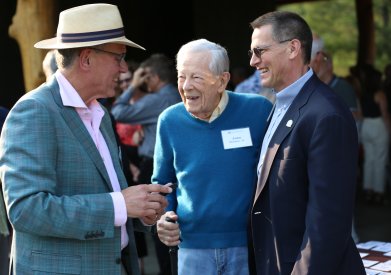The More Things Change, the More They Stay the Same
September 29, 2014
I recently met with former CEOs of prepaid group practices (PGPs) that were part of the early years (1984-2000) of the HMO Group—now the Alliance of Community Health Plans—a coalition of not-for-profit, pre-paid group practices. (I was the first president and CEO.) One of the most notable accomplishments of this alliance back then was the creation of HEDIS. Since my trip, I have been reflecting on the similarities and differences of the state of the health care industry 30 years ago and what it is now.vent of the HMOs in the early 70s, group practices that developed prepaid insurance arms were called PGPs. All of them were not-for-profit and physicians in these group practices had the autonomy and control to deliver the best care at affordable premiums and enhance access to care – the very definition of medical professionalism.
In talking with these CEOs gathered for this weekend, each expressed pride in having the answers to the ills of health care 30 years ago. Some of these health plans are still operating, (e.g., HealthPartners and Kaiser Permanente) but others have long since merged with other organizations. The assembled group viewed current accountable care organizations and patient-centered medical homes as merely different labels for what their organizations were doing in the 70s and 80s. These types of health plans are mission-driven and focus on achieving appropriate care: care management, team-based models of care, preventive care, a continuum of care from acute to chronic care, quality improvement and moving away from fee-for-service.
More interesting to me, however, was what was different today by comparison. Below is our “Top Ten” list of what has changed health care in the past 30 years:
- The existence of better data and better measures of quality
- The advancement of both clinical and administrative technology—in particular, electronic medical records and “virtual” patient encounters—and ways in which this new technology facilitates “e-health”
- The current culture of patient safety and emphasis on systems
- The diversity of leadership by gender and race (there was only one woman at this reunion)
- A renewed focus on primary care after years of neglect by many group practices
- More and better use of clinical evidence
- An increased focus on teamwork and inter-professional education, better evidence and better tools
- Wide recognition of the Triple Aim and normalization of discussions on resource use and costs – particularly, the awareness around resource use issues on behalf of medical students, residents and younger physicians
- More ethical issues related to birth (neonatal care) and death
- Improved access to care and a better way for individuals to obtain coverage due to ACA
There is no doubt that health care today is much different than it was 30 years ago. However, the ideals we all rallied behind remain the same: better delivery and payment design, and a focus on populations and health. Yet, the advances of the past three decades have changed the equation significantly and I believe there is a better chance of success for the new models like ACOs and PCMHs than ever before. Those of us still working toward a higher ideal of health care in this country are indebted to these pioneers and innovators of yesterday for carving out a path. It’s up to us and, more importantly, the next generation to continue the charge.

Daniel B. Wolfson
EVP and COO, ABIM Foundation


